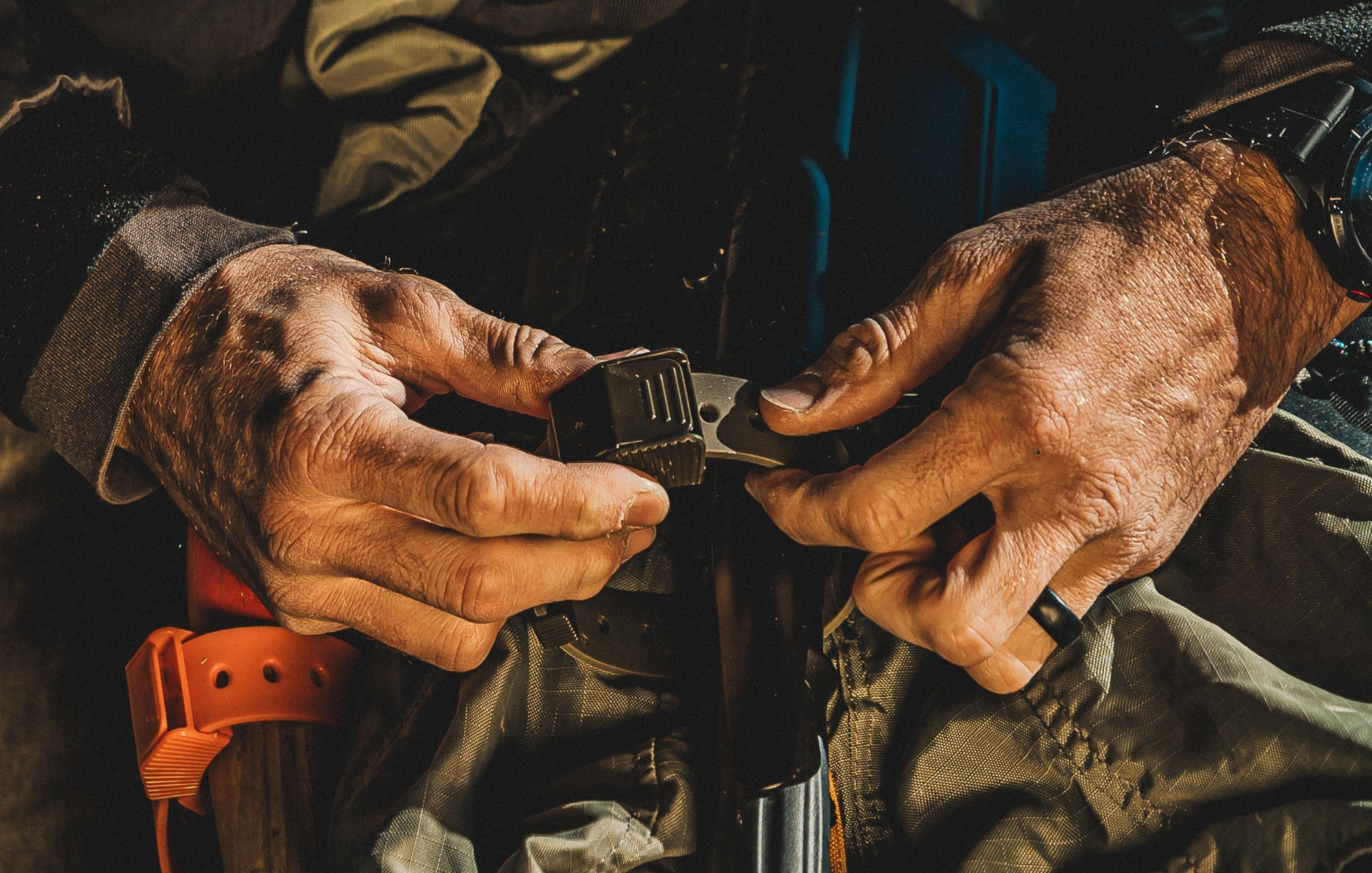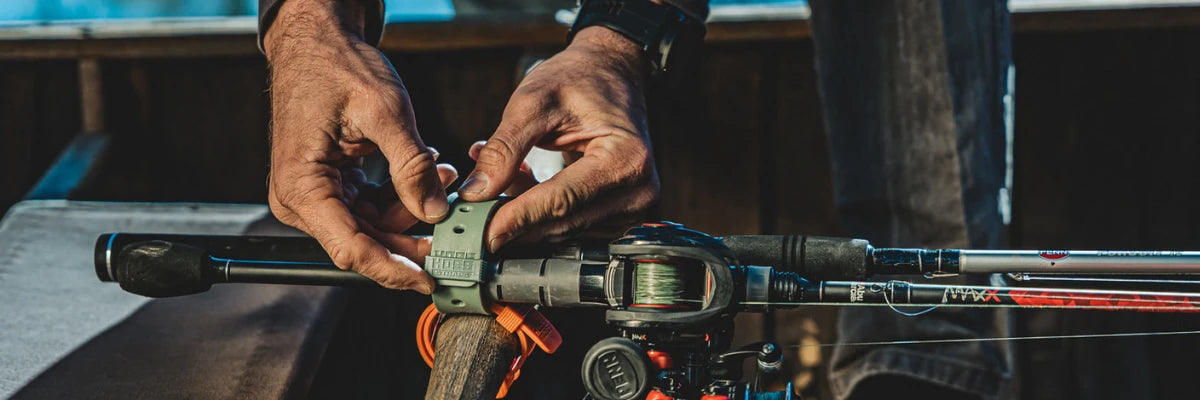What Makes a Tactical Dog Collar Work for Your Pet

Check out our training collar setup, d-ring dog collar, and easy dog collars built for comfort.
Why Tactical Dog Collars Are Gaining Popularity
If you follow active pet owners on social media or visit outdoor recreation groups, you've likely noticed tactical dog collars gaining significant traction. This isn't a random trend—it's backed by real market growth. The dog collars market is projected to grow from USD 6.1 billion in 2025 to USD 12.4 billion by 2035, reflecting a CAGR of 7.8% during the forecast period, and tactical collars represent a major portion of this expansion.
What's driving this growth? Pet owners today view their dogs as family members and are willing to invest in gear that prioritizes safety and durability. Rising pet ownership, increasing demand for smart pet accessories, and advancements in customizable collar designs are reshaping how people shop for dog gear. Additionally, North American consumers (72%) favor reflective strip or GPS locator collars, while active dog owners are seeking durable options for hiking, camping, and hunting trips.
Beyond aesthetics, tactical collars solve real problems for dog owners. Whether you have a strong breed that pulls, an active pooch who loves outdoor adventures, or a small dog that needs reliable control, tactical collars deliver practical benefits that standard collars simply can't match.
What Exactly Is a Tactical Dog Collar?
A tactical dog collar is more than just a collar with a military look—it's a purposefully engineered piece of equipment. These collars were originally designed for working dogs, such as police and military K9s, service dogs, and hunting dogs, but are now benefiting pets who pull at the leash and active breeds.
At its core, a tactical collar prioritizes functionality and durability. The design focuses on strength and performance, offering features specifically designed for outdoor adventures, training sessions, and working environments. Unlike traditional collars that wear out after a few years, tactical collars are built to last through demanding use.
The philosophy behind tactical collars is straightforward: your dog's gear should be as reliable as your dog is loyal. Whether you have a military or police dog on the front lines, a hunting dog who is your right hand out in the wild, or an active pooch who loves fetch, hikes, and the like, a tactical dog collar helps your dog perform at its peak.
Benefits of Using a Tactical Dog Collar

Superior Durability and Longevity
The first thing you'll notice about a tactical collar is its construction quality. Tactical collars are typically made from heavy-duty materials such as military-grade nylon or leather, and are designed to withstand the pulling and tugging that a working dog may be subjected to. This means the collar is less likely to break or become damaged, which can be a major concern for dogs who are active or working in high-stress environments.
The durability goes beyond materials—reinforced stitching (double or even triple-stitched seams) and heavy-duty metal quick-release buckles enhance performance and safety. Many quality tactical collars come with lifetime warranties, reflecting manufacturers' confidence in their durability.
Real-world data supports this. According to surveys, 80% of dog owners prioritize shatter-proof, strong, and adjustable material as an over-riding requirement when choosing a dog collar, and tactical collars consistently deliver on this expectation.
Enhanced Control and Safety
Control matters, especially for owners of strong breeds or dogs prone to pulling. The material and construction of tactical dog collars give you more control over your dog and keeps them safe, with double- or even triple-stitched seams and unbreakable buckles.
Many tactical collars feature integrated handles for close control. These built-in handles provide immediate, close control of your dog during tense or dangerous situations, which can be especially useful for handlers in high-stress environments. This feature also makes it easier to guide your dog through crowded areas or during training sessions.
The hardware matters too. Heavy-duty D-rings made from rustproof materials and reinforced attachment points enhance both the collar's durability and safety. This robust construction means your leash attachment won't fail at a critical moment.
Comfort and Fit
Despite their industrial appearance, tactical collars prioritize your dog's comfort. Many designs incorporate soft materials around the neck area—such as neoprene padding—to prevent chafing or discomfort during extended wear. This is especially important if your dog will wear the collar for full days during outdoor activities.
Tactical collars typically come with adjustable straps, allowing for a customized fit tailored to the specific size of your dog. This prevents the collar from slipping or becoming too tight as your dog grows or changes weight.
Breathable materials ensure comfort during extended outdoor wear, allowing owners to take their dogs out all day without worrying about the collar making them uncomfortable.
Versatility and Customization
Tactical collars go beyond basic identification. Many tactical collars feature MOLLE webbing, which allows the attachment of equipment such as ID tags, GPS units, and even cameras. This functionality is useful for owners who want to add accessories like GPS trackers, cameras, or additional identification.
Additional customization options include quick-release mechanisms for emergency removal without sacrificing security, custom embroidery for names and contact info, reflective strips for night visibility, and rounded edges to prevent irritation.
This versatility means your tactical collar can grow with your dog's lifestyle—whether you're starting with daily walks and later add hiking trips, or you want to attach identification patches for service or working roles.
How to Choose the Right Tactical Collar for Your Dog

Consider Your Dog's Size
Sizing isn't one-size-fits-all. For small dogs (under 20 lbs), a 1/2"–3/4" wide collar works well; medium dogs (20–35 lbs) typically need 3/4"–1" wide collars; large dogs (40–65 lbs) fit 1.25"–1.5" collars; and giant dogs (70+ lbs) need 1.5"–2" wide collars.
Getting the size right is critical. To ensure you get the correct size, use a non-elastic string and wrap it around the base of your dog's neck, allowing for a little wiggle room to ensure the collar isn't too tight. Once you have your measurement, compare it against the manufacturer's sizing chart.
Assess Your Dog's Activity Level
Your dog's lifestyle should guide your choice. Everyday walkers need a standard tactical collar, while training-focused dogs benefit from collars with handles. For outdoor adventures like hiking or hunting, water-resistant nylon collars offer superior protection, while smaller, active dogs might need lighter-weight options.
Think about your typical activities: walks around the neighborhood, weekend hikes, water activities, or working roles. This will help you prioritize which features matter most.
Evaluate Material Options
Three main materials dominate the tactical collar market, each with distinct advantages:
Military-grade nylon: Lightweight, strong, water-resistant, and easy to clean, nylon is the most popular choice for active dog owners.
Leather: Known for its classic appearance and durability, high-quality leather collars can last for years with proper care, though leather can be heavier and less water-resistant than nylon, and may require more maintenance.
Biothane: A modern alternative that is waterproof and easy to sanitize, biothane bridges the gap between traditional materials.
Essential Features to Look For
When shopping, prioritize these features:
-
Reinforced stitching and strong hardware that can withstand daily wear and stress
-
Quick-release or breakaway buckles for safety and emergency situations
-
Comfortable padding that won't irritate your dog's neck
-
Reflective elements for nighttime visibility and safety
-
Adjustability to ensure a proper fit over time
Quality tactical collars like Hoss Straps combine these features with premium materials, offering a balance of durability, control, and dog-friendly design. They're built for active dog owners who refuse to compromise on quality—whether your dog is a weekend hiking buddy or a full-time working partner.
Getting Your Dog Acclimated to a Tactical Collar
If your dog has only worn lightweight collars, transitioning to a tactical collar requires patience. Introduce the collar gradually with positive reinforcement—let your dog wear it for short periods initially while offering treats and praise. Pair collar wearing with enjoyable activities like walks or playtime to create positive associations.
Ensure the collar fits properly before extended wear, and supervise your dog during the transition period. If your dog shows signs of stress or resistance, consult a professional trainer. Most dogs adapt quickly once they realize the collar is comfortable and leads to rewarding activities.
FAQ: Tactical Dog Collars Answered
1. Are tactical dog collars safe for everyday wear?
Yes, tactical dog collars are designed specifically for everyday use. Unlike training collars that require supervision, tactical collars prioritize comfort with soft padding, breathable materials, and proper weight distribution across the neck. Many dogs wear them all day without discomfort, as the padding and adjustability prevent chafing. However, always ensure proper fit and monitor your dog for any signs of irritation.
2. Can a tactical collar help with leash training?
Absolutely. The superior control and enhanced safety features of tactical collars—including built-in handles and heavy-duty hardware—make them valuable training tools. The integrated handle provides immediate, close control, which helps redirect your dog's attention during training sessions. Combined with consistent training methods and positive reinforcement, a tactical collar can significantly improve your dog's leash manners.
3. What's the difference between a tactical collar and a regular collar?
The core difference lies in construction and purpose. While traditional collars serve as basic identifiers and restraints, tactical dog collars elevate the simple accessory by adding features specifically designed for outdoor adventures, training sessions, and working environments. Regular collars typically use basic nylon or cloth with simple buckles, while tactical collars feature double or triple-stitched seams, military-grade materials, heavy-duty hardware, and extras like MOLLE webbing or integrated handles that standard collars don't offer.
4. How do I ensure my tactical collar fits properly?
Proper fit is crucial for safety and comfort. Use a non-elastic string to measure around the base of your dog's neck—just a few centimeters below where the neck meets the body—allowing a little wiggle room so the collar isn't too tight. You should be able to fit two fingers between the collar and your dog's neck comfortably. Many tactical collars feature adjustable straps within overlapping size ranges, so you can fine-tune the fit. Always recheck the fit periodically, especially as puppies grow or dogs' weight fluctuates.
5. Are tactical collars suitable for small dog breeds?
Yes, absolutely. Tactical collars are available in various sizes, catering to different dog breeds, from medium and large dogs down to toy breeds. For small dogs, look for lightweight options with proportionally sized hardware and padding. Small, active dogs benefit from tactical collars' durability and control features just as much as larger breeds. The key is finding the right size and ensuring it's comfortable—a properly fitted tactical collar will enhance your small dog's safety and give you better control without causing discomfort.







